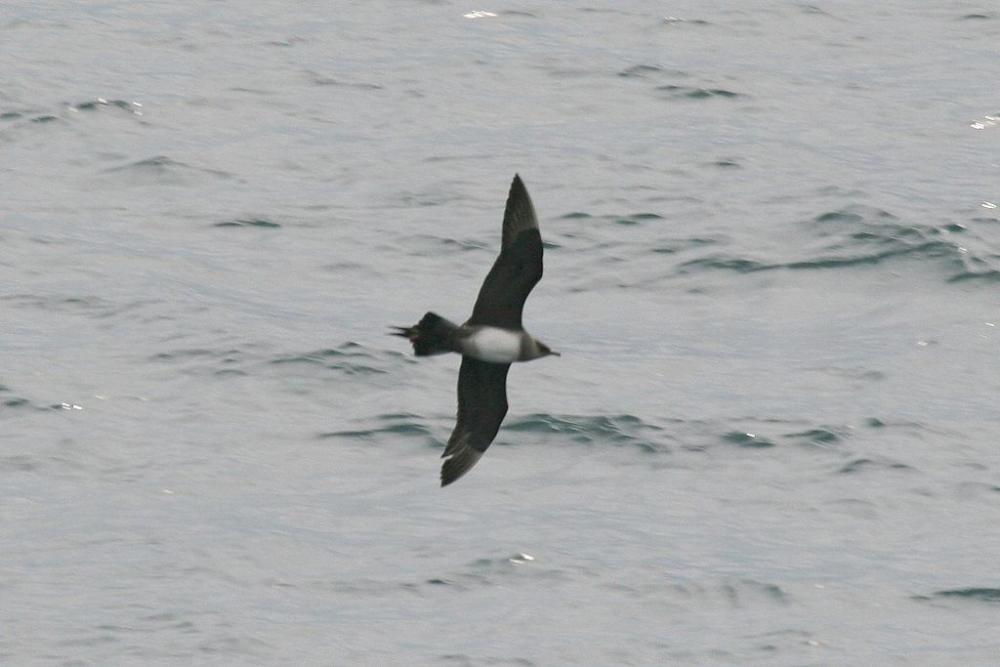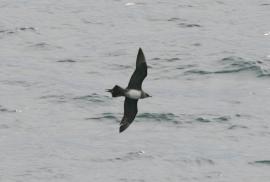Guide to Boreal Birds
Overview
This is the most familiar of our jaegers since it comes more readily into bays and estuaries and often feeds closer to shore. Like the other jaegers, it usually obtains food by pursuing gulls and terns and forcing them to drop food.
Description
21" (53 cm). A fast-flying, gull-like seabird. Typical adults are brown above, white or light dusky below, with an incomplete gray-brown band across the breast; a dark, almost black, crown; and short (up to 3-4") pointed central tail feathers. Dark-phase birds are uniform dusky brown with a darker cap; intermediates between the two color phases occur. Often seen harrying gulls and terns.
Voice
Usually silent; a variety of mewing and wailing notes on breeding grounds.
Nesting
2 olive-brown eggs, with darker brown spots, in a grass-lined depression on the ground or among rocks.
Habitat
Breeds on grassy tundra and stony ground near inland lakes; at other times on the ocean.
Range/Migration
Breeds in Alaska and northern Canada. Winters in warm waters in Southern Hemisphere. Also in northern Eurasia.



